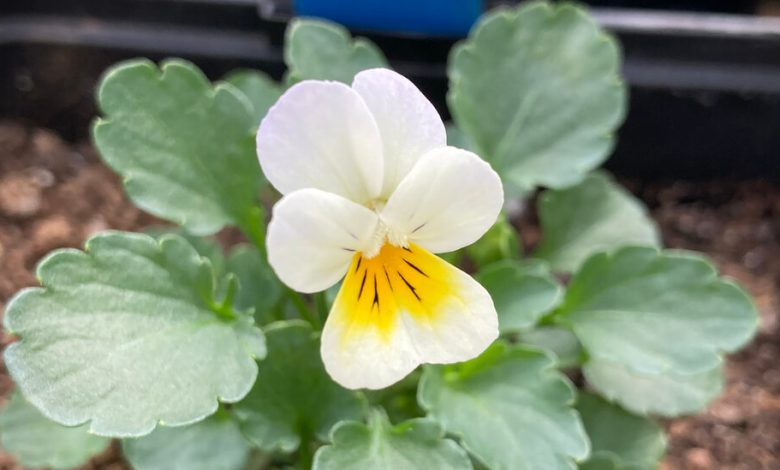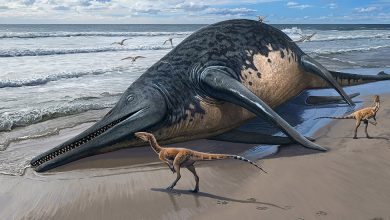Flowers Are Evolving to Have Less Sex

Every spring, trillions of flowers mate with the help of bees and other animals. They lure the pollinators to their flowers with flashy colors and nectar. As the animals travel from flower to flower, they take pollen with them, which can fertilize the seeds of other plants.
A new study suggests that humans are quickly altering this annual rite of spring. As toxic pesticides and vanishing habitats have driven down the populations of bees and other pollinators, some flowers have evolved to fertilize their own seeds more often, rather than those of other plants.
Scientists said they were surprised by the speed of the changes, which occurred in just 20 generations. “That’s rapid evolution,” said Pierre-Olivier Cheptou, an evolutionary ecologist at the University of Montpellier in France who led the research.
Dr. Cheptou was inspired to carry out the study when it became clear that bees and other pollinators were in a drastic decline. Would flowers that depend on pollinators for sex, he wondered, find another way to reproduce?
The study focused on a weedy plant called the field pansy, whose white, yellow and purple flowers are common in fields and on roadsides across Europe.
Field pansies typically use bumblebees to sexually reproduce. But they can also use their own pollen to fertilize their own seeds, a process called selfing.
Selfing is more convenient than sex, since a flower does not have to wait for a bee to drop by. But a selfing flower can use only its own genes to produce new seeds. Sexual reproduction allows flowers to mix their DNA, creating new combinations that may make them better prepared for diseases, droughts and other challenges that future generations may face.
To track the evolution of field pansies in recent decades, Dr. Cheptou and his colleagues took advantage of a cache of seeds that France’s National Botanical Conservatories collected in the 1990s and early 2000s.
The researchers compared these old flowers with new ones from across the French countryside. After growing the new and old seeds side by side in the lab under identical conditions, they discovered that selfing had increased 27 percent since the 1990s.
The researchers also compared the anatomy of the plants. Although the new field pansies had not changed in their overall size, their flowers had shrunk by 10 percent and produced 20 percent less nectar.
The researchers suspected that these changes made the new field pansies less attractive to bumblebees. To test that idea, they placed bumblebee hives inside enclosures with old and new field pansies. Sure enough, the bees paid more visits to the old plants than to the new ones.
As bumblebee populations have declined, Dr. Cheptou said, the cost of producing nectar and big, attractive flowers may have become a burden on the flowers. Instead of investing energy into luring pollinators, he speculated, field pansies are having more success by directing it to growth and resisting diseases.
The researchers suspect that many other flowers face the same challenge to their survival, and they may also be evolving in the same direction. “There’s no reason to think that other plants have not evolved,” Dr. Cheptou said.
If that’s true, the plants may be making a bad situation worse for pollinating insects. Many pollinators depend on nectar as food; if the plants make less, the insects will go hungry.
Pollinators and flowers may be locked in a downward spiral. Less nectar will drive down populations of insects even more, making sexual reproduction even less rewarding for the plants.
The spiral will not be bad for just the insects, Dr. Cheptou warned. If some plants eventually give up on sexual reproduction altogether, it is unlikely that they will be able to regain that ability again.
In the long term, the genetic limitations of selfing could put plants at risk of extinction. “They will not be able to adapt, so extinction will become more likely,” Dr. Cheptou said.
The results were “impressive, if disheartening,” said Susan Mazer, a botanist at the University of California, Santa Barbara, who was not involved in the research.
Dr. Mazer said that the spiral might even be worse than Dr. Cheptou’s research suggested. Along with a decline of pollinators, flowering plants are facing other challenges that may be driving them to abandon sexual reproduction.
Global warming, for example, is speeding up the growth of flowers. It may be shrinking the window of time before flowers wilt in which they can offer pollinators nectar.
But Sasha Bishop, an evolutionary biologist at the University of Michigan who was not involved in the study, said that some flowers might respond to the decline of pollinators in the opposite way.
In a study on morning glories in the southern United States, she and her colleagues found that between 2003 and 2012, the flowers became bigger, not smaller. The scientists see that shift as a strategy to keep attracting bees as they become less common.
“They could invest in selfing, or they could invest in attracting pollinators,” Dr. Bishop said. “Both outcomes are perfectly reasonable.”



